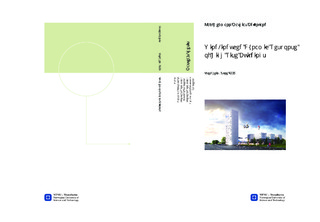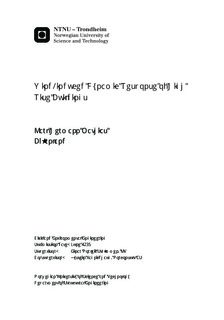| dc.contributor.advisor | Strømmen, Einar Norleif | nb_NO |
| dc.contributor.advisor | Vagnildhaug, Oystein | nb_NO |
| dc.contributor.author | Bjørnland, Karl Hermann Mathias | nb_NO |
| dc.date.accessioned | 2014-12-19T12:02:12Z | |
| dc.date.available | 2014-12-19T12:02:12Z | |
| dc.date.created | 2013-09-16 | nb_NO |
| dc.date.issued | 2013 | nb_NO |
| dc.identifier | 648718 | nb_NO |
| dc.identifier | ntnudaim:9331 | nb_NO |
| dc.identifier.uri | http://hdl.handle.net/11250/237224 | |
| dc.description.abstract | This thesis aims to investigate the dynamic response of a high rise concrete structure. Calculations are performed for Lerkendal Hotel, a slender 75 meter high building located in Trondheim. Buffeting response has been the main focus in the calculations, and both displacements, accelerations and cross sectional forces have been obtained.Initially, acceleration demands regarding human comfort in a structure subjected to wind induced vibrations were established using design codes. In addition, the expected structural damping of a high rise concrete structure was estimated using literature. To determine basic dynamic properties for the given structure, a modal FEM-analysis was conducted using SAP2000. A theoretical study was performed to establish the basis needed for buffeting response calculations. The structure was treated as a cantilevered, line like beam. A MATLAB computer program was made to perform all calculations. Using given and estimated input values, single mode single component response calculations were conducted for the two first translational modes. In addition, accelerations and cross sectional forces were estimated using Eurocode 1: 1-4 to serve as a conservative basis for comparison.The obtained cross sectional forces for wind excitation of the first mode were found to be considerably higher than the forces obtained from building design codes. It was found likely that the bending stiffness of the structure had been estimated too high, resulting in high resonant forces. For wind excitation of the second mode, theoretical forces proved to coincide well to forces obtained from the Eurocode. The frequency weighted acceleration was found to be much higher than the perception limit for both modes. Estimates from design codes supported the high values. As a possible solution, it was proposed that tuned mass dampers could be installed in the structure to reduce the acceleration. It was also suggested that the perception limit used could be too strict for the given structure regarding human comfort. | nb_NO |
| dc.language | eng | nb_NO |
| dc.publisher | Institutt for konstruksjonsteknikk | nb_NO |
| dc.title | Wind-induced Dynamic Response of High Rise Buildings | nb_NO |
| dc.type | Master thesis | nb_NO |
| dc.source.pagenumber | 164 | nb_NO |
| dc.contributor.department | Norges teknisk-naturvitenskapelige universitet, Fakultet for ingeniørvitenskap og teknologi, Institutt for konstruksjonsteknikk | nb_NO |

